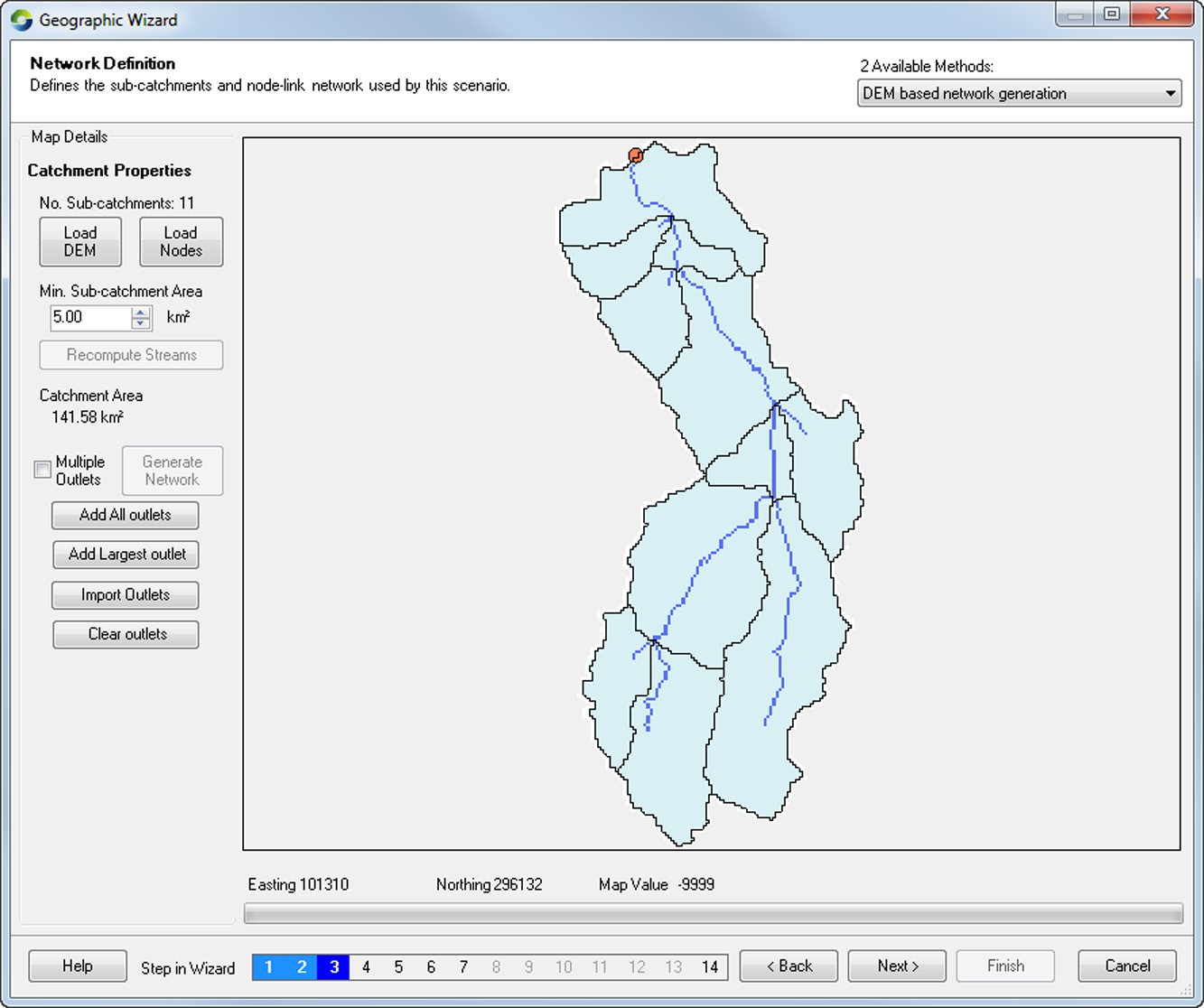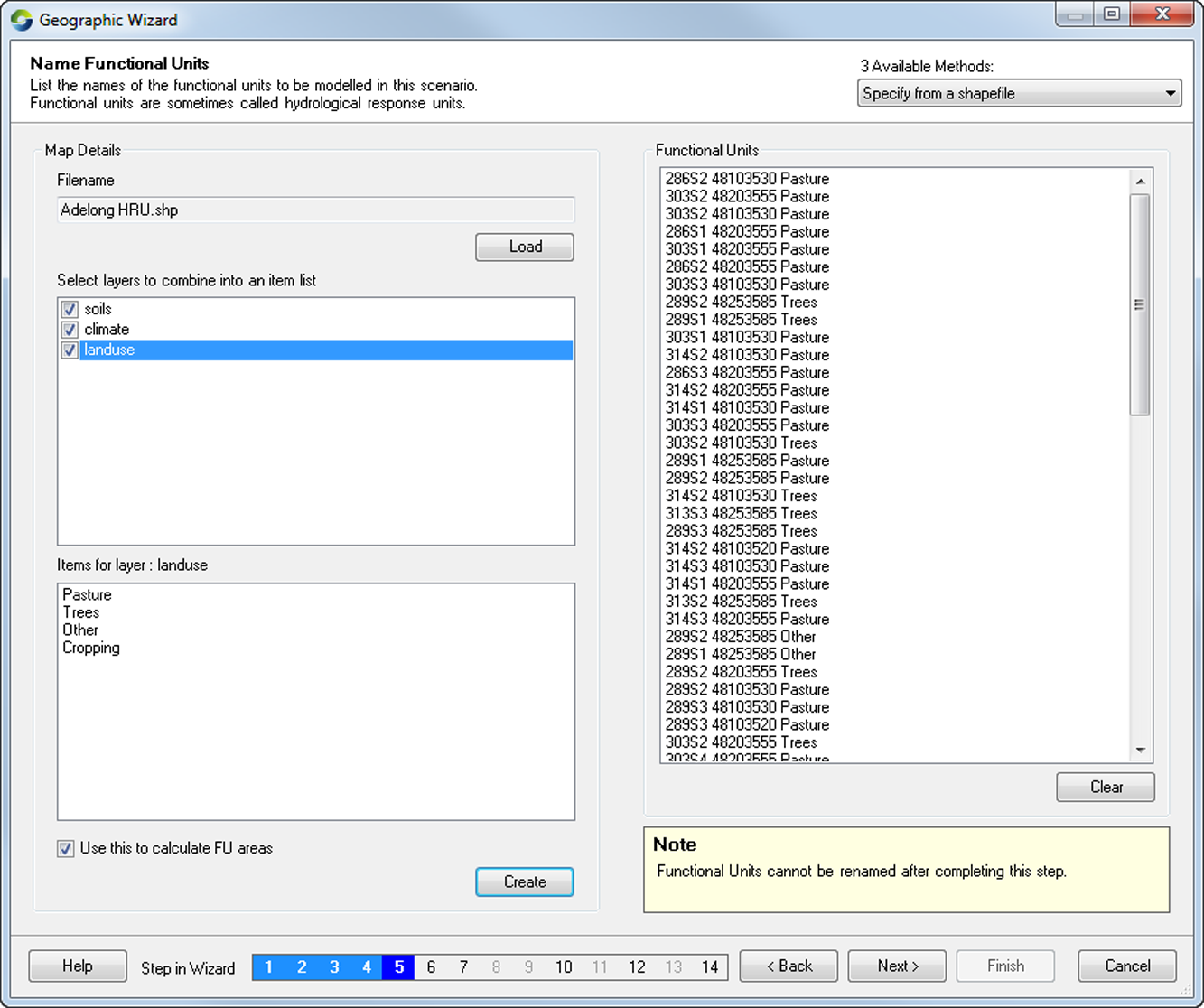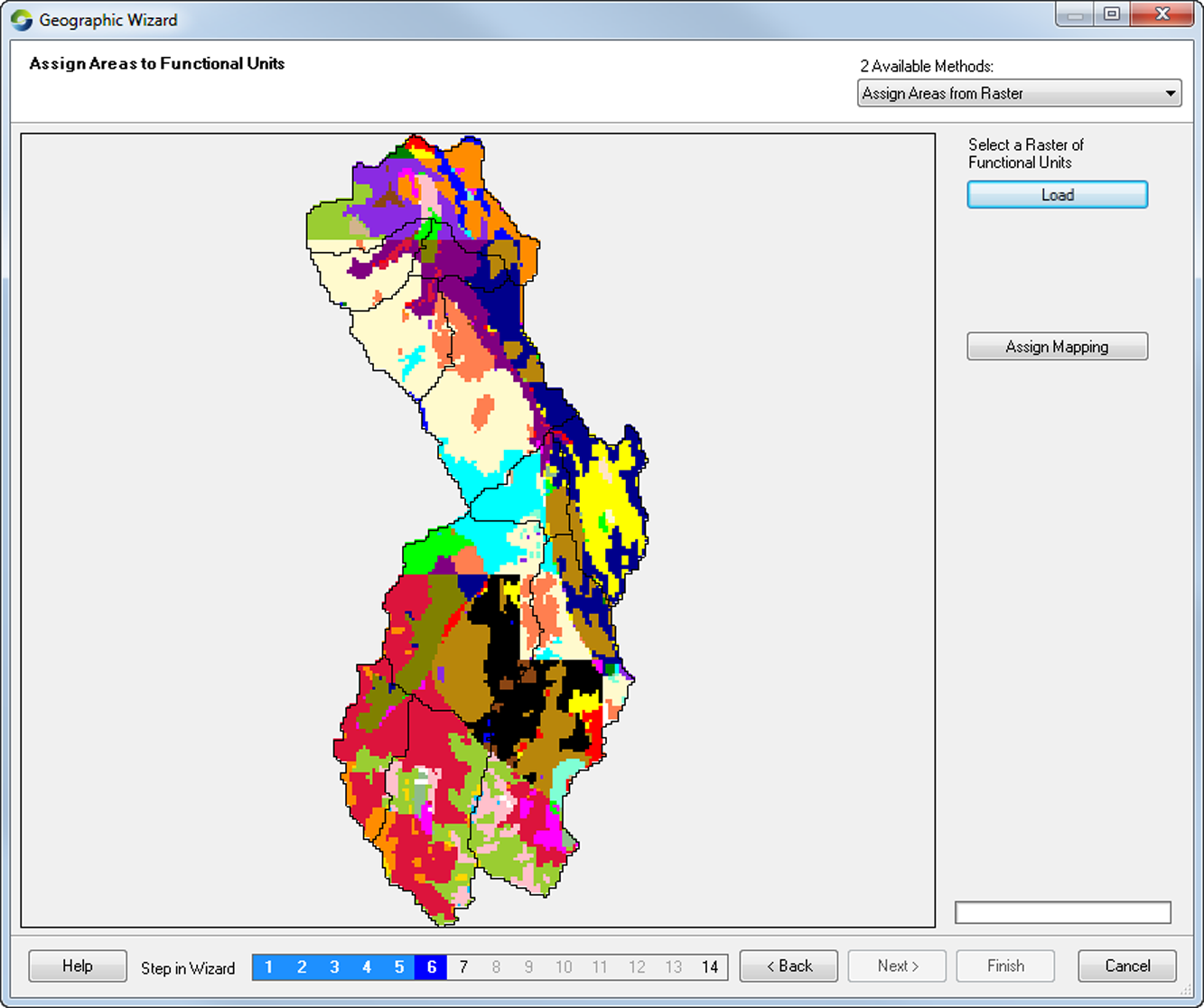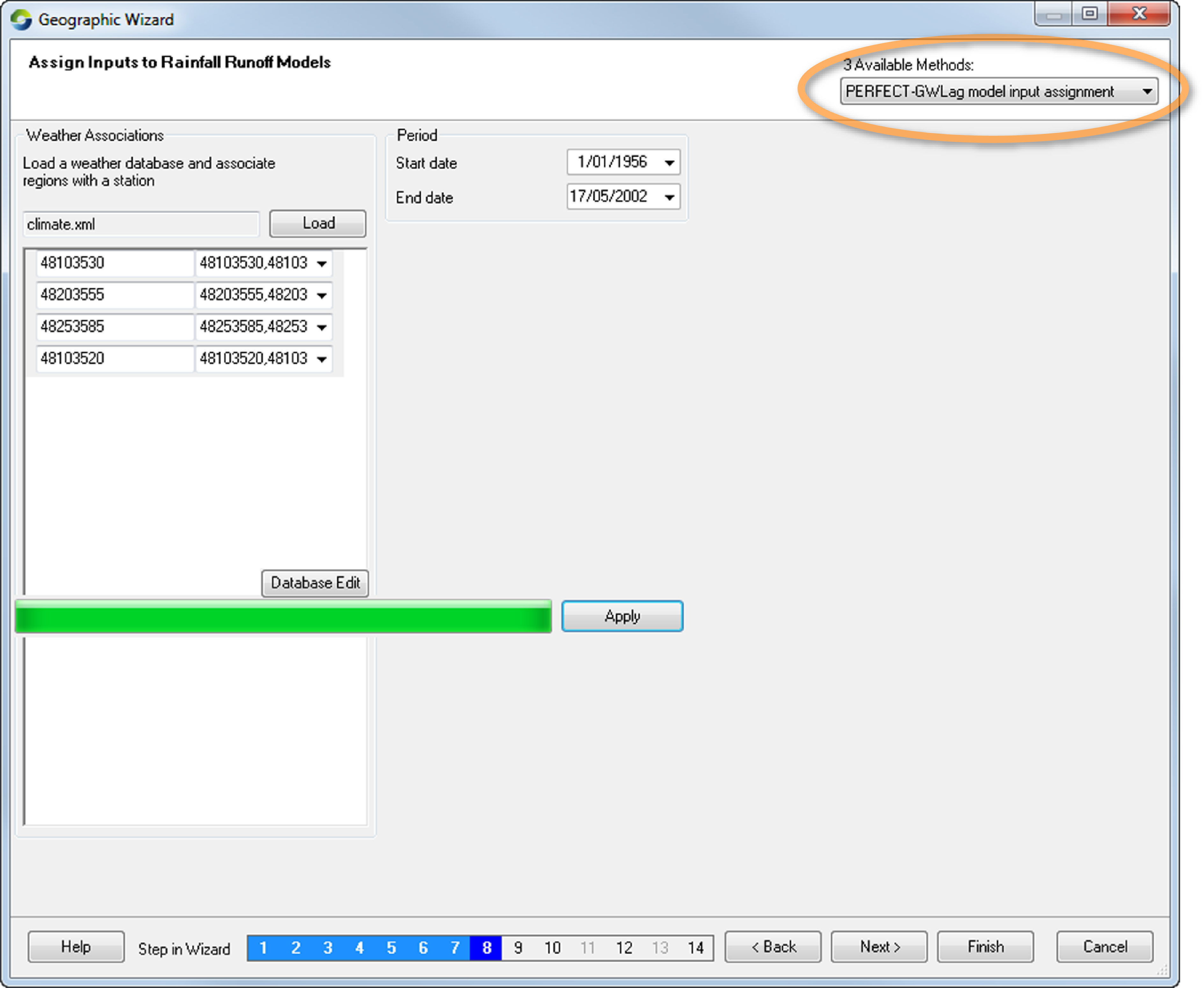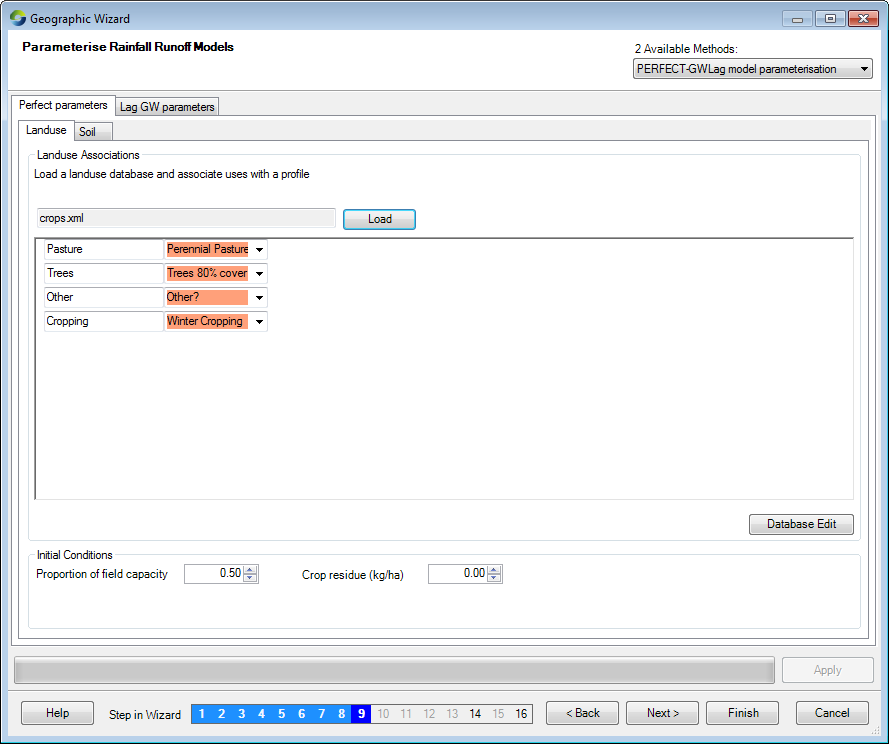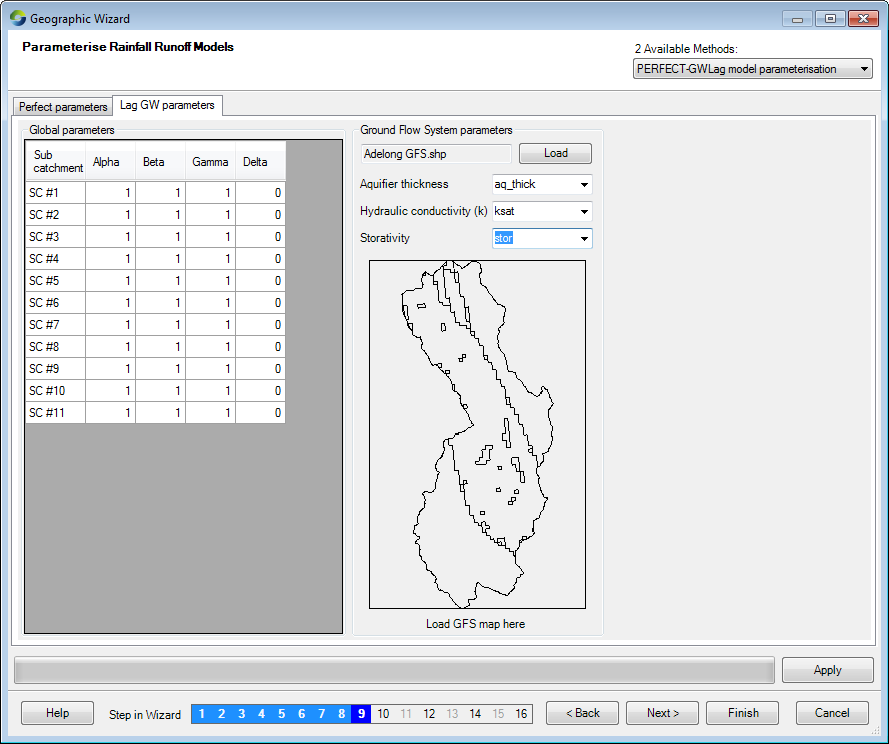GWLag Plugin
eWater acknowledges the NSW Department of Environment for their contribution of the Adelong dataset. This dataset was used in the GWLag plugin to generate examples for the Source User Guide.
Description
The PERFECT GWLag plugin allows you to model groundwater and its interactions in a sub-catchment. Ensure that the following file has been loaded into the Plugin manager prior to creating a new GWLag project:
RiverSystem.Plugins.PerfectGWLag.dll
Once the plugin has been loaded, using the Geographic Wizard, first create a standard set of sub-catchments to suit your study area and modelling requirements, then configure the appropriate parameters to model groundwater.
GWLag network definition
In Step 3 of the Geographic wizard, load a DEM-based network and configure the outlets as appropriate (Figure 1).
Figure 1. GW-Lag, Network definition
List constituents and FUs
Next, list any constituents that you want to model (in step 4), followed by the functional units (FUs) in step 5 (Figure 2). It is possible to define the functional units using a shape file and assign areas to them using a raster (Figure 3).
Figure 2. GW-Lag, Name FUs (GW-Lag)
Figure 3. GW-Lag, Assign areas to FUs
Defining and assigning models
You can then assign models to sub-catchments for rainfall runoff, constituent generation, and any filtering you wish using the Geographic Wizard, or later, using the options in the Edit menu (refer to Rainfall runoff models for details):
- Constituent generation – As an example, you can add “Salt” as a constituent and assign the “Simple GW salt model”;
- Rainfall runoff – assign “PERFECT GWLag” as a model. To assign inputs, choose PERFECT GWLag model input assignment from the Available Methods drop down menu (Figure 4) and load the weather database you wish to use. Also check the following:
- The station number from each FU (left hand column) matches the station numbers on the right hand side (drop down lists, right hand columns). If they do not, the entry on the right hand side will be the closest text based match, not the closest geographic match. You can adjust the matches by selecting an alternate station from the drop down list of stations available in the loaded weather database;
- Note that the minimum and maximum dates will be displayed by default. To save memory you can either import the desired time period or import the entire range but run the model for a selected period. The latter is a more flexible option.
- Filter – Assign any filter model you wish from the drop down menu;
- Links – you can add a model to selected links and if flow routing or a storage model is required using the Edit menu. Note that there is no link model specific to the Groundwater tools in Source;
- Nodes – you can change node models once a sub-catchment has been setup using the Edit menu; and
- Catchment model - a GW pumping model is available, if required.
Figure 4. GW-Lag - Assigning inputs to rainfall runoff models
Parameterising models
This section describes how to parameterise each of the assigned models. It requires the parameterisation of both plugin components – PERFECT and GWLag.
Constituent generation
Choose SimpleGWSaltModel parameterisation from the Available Methods drop down list (Figure 170).
- Specify the throughflow salinity percentage value using the up/down arrows;
- Specify rainfall salinity by loading a rainfall salinity raster, or enter a single value;
- Enter the averaged aquifer salinity by loading a GFS shape file in the Groundwater Flow System parameters group box; and
- Choose the field name that represents aquifer salinity using the drop down menu and click Apply.
Figure 5. GWLag constituent generation
Rainfall runoff
PERFECT
Choose PERFECT-GWLag model parameterisation from the Available Methods drop down list. The PERFECT and GWLag parameters are specified under separate tabs.
To parameterise PERFECT (as shown in Figure 3):
- Select the Landuse tab under Perfect Parameters and click Load. Import the land use database in the same way;
- Once the database is loaded, check and adjust the crop and soil parameter associations. You may also choose to set the initial conditions such as “Proportion of Field Capacity” or “Crop Residue”.
- Select the Soil tab under Perfect Parameters and click Load. Repeat the process for land use by loading a soils database for specifying soil association groups.
Figure 6. Parameterise rainfall runoff model – PERFECT
GWLag
To parameterise the GW Lag components, click on the Lag GW parameters tab (shown in Figure 7):
- Set all the global parameters; these can either be changed individually or all at once. To set individually click on the appropriate cell and type a new value. To make changes to all values in a column (eg. one parameter) change one cell to the desired value. Left click to highlight the cell with the new value, right click in the highlighted cell to Apply to all sub-catchments using the contextual menu;
- Specify the groundwater parameters by importing them from a GFS shape file. Click Load under Ground Flow System parameters and load a GFS shape file;
- Match the fields for aquifer thickness, hydraulic conductivity and storativity from the loaded GFS shape file by selecting the appropriate field name from each of the three drop-down lists; and
- Click Apply.
